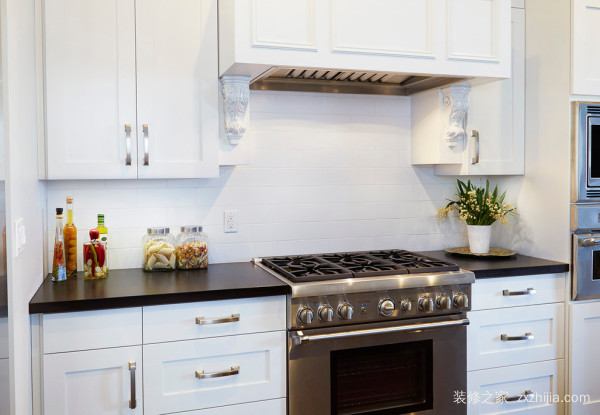When decorating, we use ceramic tiles is the best way, but we know about the white tiles that are often sold in the market. Our white tiles are very good, but the friends don’t want to know some about white tiles. The introduction, as well as the selection of white ceramic tiles, what is the use of white tiles in the home to decorate the white tiles.

First, white tile buying skills
1, level identification
White floor tiles are usually divided into five grades: quality products, first-class products, second-class products, qualified and unqualified products, superior products are the best grades of goods, and first-class products are products with subtle products, second-class products. If the product is slightly worse, the qualified tile refers to the product holding the relevant approval. We need to make a careful comparison. Don't try to buy cheap unqualified all-glazed glaze that is harmful to our body.
2, pictures and colors
The markings and drawing colors of good white floor tiles are clear and common, the technology is exquisite and fine, and there is no obvious dislocation, broken line or color depth. The color difference of the white floor tiles is directly related to the decorative effect and the quality of the goods. In the same batch of full glaze, there may be chromatic aberration. Therefore, in the process of purchasing full glaze, it is necessary to sample and compare each packaged product, and put this in the same type and the same type. In the glaze, the degree of chromatic aberration was investigated, and the poor glaze color difference was large and the depth was not significant.
3. Norm scale
When buying white floor tiles, everyone pays attention to whether the tile scale is the norm. The difference between the same standard tile size does not exceed 2 mm. The second point is to pay attention to whether the tile perimeter is flat, the thickness is uniform or not, and usually the tile thickness is 8 mm. Or above, and its enamel is thick and smooth. It is necessary to judge whether the scale of the white floor tile glaze conforms to the specification, and it is possible to place the full glaze on a flat surface to see whether the four sides conform to the flat surface, and whether the four corners of the full glaze are right angles, because of the good all throw There are no disadvantages such as high and low glaze appearance and no warping angle at the four corners. The error of the side length does not exceed the range of 0.2-0.3 mm, and the thickness error is within 0.1 mm.

Second, white tile care method
1, gap processing
The gap between the tiles is where the dirt and bacteria accumulate the most, so pay special attention to cleaning and maintenance. The main raw material is putty and white cement, so it is difficult to scrub the dirt on it. After the tile is laid and cleaned daily, a waterproofing agent can be brushed in the gap to prevent water and mildew. Gap that is often susceptible to stains can be applied to the tile joints with a candle to prevent excessive stain adhesion.
2, the surface is clean
Tiles stained with stains should be removed in time. Depending on the nature of the stain, choose a suitable cleaner to remove. Acid-alkaline detergent can effectively remove the stain on the tile surface, but since the acid-base component may cause corrosion on the tile surface, it should not be used frequently. More acid-base cleaner should be used. Daily cleaning can be done with household detergents, soaps, etc.
The characteristics of white ceramic tiles are good decoration, and it can be versatile with other houses. Our small series introduces some good methods for purchasing white ceramic tiles. Please refer to them, and what is the daily care method of this white ceramic tile? . Our decoration home network also has some decorative information, everyone pays attention.
Grinding is an abrasive machining process that uses a grinding wheel as the cutting tool.
A wide variety of machines are used for grinding:
Hand-cranked knife-sharpening stones (grindstones)
Handheld power tools such as angle grinders and die grinders
Various kinds of expensive industrial machine tools called grinding machines
Bench grinders
Grinding practice is a large and diverse area of manufacturing and toolmaking. It can produce very fine finishes and very accurate dimensions; yet in mass production contexts it can also rough out large volumes of metal quite rapidly. It is usually better suited to the machining of very hard materials than is "regular" machining (that is, cutting larger chips with cutting tools such as tool bits or milling cutters), and until recent decades it was the only practical way to machine such materials as hardened steels. Compared to "regular" machining, it is usually better suited to taking very shallow cuts, such as reducing a shaft's diameter by half a thousandth of an inch or 12.7 μm.
Grinding is a subset of cutting, as grinding is a true metal-cutting process. Each grain of abrasive functions as a microscopic single-point cutting edge (although of high negative rake angle), and shears a tiny chip that is analogous to what would conventionally be called a "cut" chip (turning, milling, drilling, tapping, etc.)[citation needed]. However, among people who work in the machining fields, the term cutting is often understood to refer to the macroscopic cutting operations, and grinding is often mentally categorized as a "separate" process. This is why the terms are usually used separately in shop-floor practice.
Lapping and sanding are subsets of grinding.
Types of grinding are:
Cylindrical grinding
Surface Grinding
Form grinding
Pre-grinding
Precision Grinding,Machine Parts Honing,Centerless Grinding Small Shaft,External Cylindrical Grinding Core
Dayue Precision Technology (Dongguan) Co., Ltd. , https://www.dayuechn.com